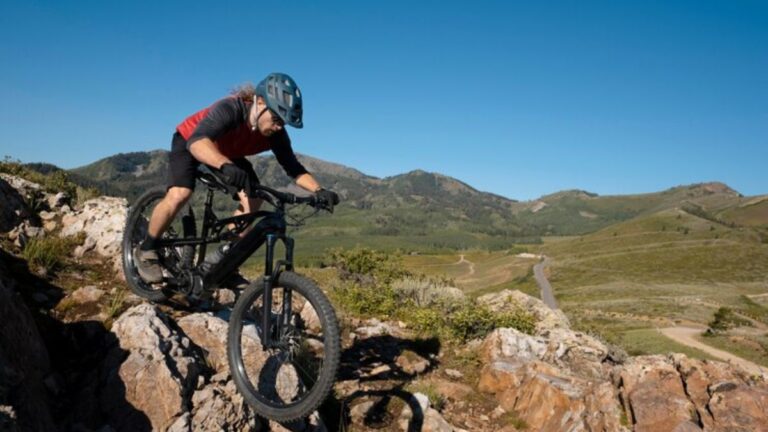Introduction to Mountain Biking
Mountain biking offers a thrilling way to explore the outdoors while getting a fantastic workout. It’s a sport that requires physical stamina, sharp mental focus, and technical skills. Whether you’re seeking the adrenaline of an exhilarating downhill or the challenge of a rugged climb, mountain biking has something for all adventure enthusiasts. Programs designed to Train to Ride can significantly enhance your biking capabilities by focusing on skill development and physical conditioning tailored to mountain biking.
Basic Mountain Biking Skills
Mastering basic skills through MTB training, such as proper body positioning, braking techniques, and cornering, is crucial for a secure and pleasant bike ride. Maintaining a low center of gravity is essential for preserving balance, especially on rough surfaces. Scanning the trail ahead enables anticipating obstacles and selecting the optimal route. Braking should be done smoothly and evenly to prevent skidding, with more pressure on the rear brake. Cornering requires shifting your weight and looking where you want to go rather than fixating on obstacles.
Essential Mountain Biking Gear
Before you hit the trails, make sure you have the right gear. Wear a well-fitted helmet to ensure safety by reducing the risk of head injuries. Gloves are essential not just for better grip but also for protecting your hands from blisters and scrapes. Investing in a quality hydration pack is also essential to keep yourself hydrated during long rides, especially on hot days. Your bike should be well-tuned and ready for rugged terrain to ensure a smooth and safe experience. Pack a repair kit, including spare tubes, a pump, and a multi-tool to handle minor mechanical issues you might encounter on the trail.
Advanced Mountain Biking Techniques
Once you’re comfortable with the basics, you can incorporate advanced techniques to tackle more challenging trails. Navigating technical terrains involves reading the trail, spotting rocks and roots, and using precise body movements to maneuver your bike. Handling jumps requires learning to preload your suspensions and mastering the timing of your takeoff and landing. Mastering switchbacks and tight turns on a trail involves smooth braking and balancing while changing direction. Practicing these skills can make your mountain biking adventures even more exciting and rewarding.
Training Tips for Endurance
- Consistent training:Regular rides can significantly build your stamina. Aim to ride multiple times a week to increase your endurance levels progressively.
- Interval training:Incorporating intervals, such as alternating between high-intensity bursts and moderate efforts, effectively improves speed and endurance.
- Strength training:Building your muscles through squats, lunges, and core workouts is crucial for preventing injuries and improving pedaling efficiency. Hill repeats and long, steady climbs can also build strength and endurance.
Common Mountain Biking Trails
Numerous trails across the globe cater to different skill levels, offering various types of terrain and challenges. Some famous trails include the Slickrock Trail in Moab, Utah, known for its incredible rock formations and technical riding; the Downieville Downhill in California features fast descents and breathtaking views. Exploring different trails enhances your skills and allows you to experience diverse landscapes and riding conditions.
Safety Tips for Mountain Biking
- Always inform someone:Let someone know your route and expected return time to ensure help can find you if needed.
- Ride within your skill level:Never ride beyond your capabilities; walking your bike through challenging sections is fine until you build the confidence and skill to ride them.
- Carry essential items:Make sure to carry a simple first aid kit and a multi-tool with you at all times to be prepared for any minor problems that might come up.
- Check the weather and trail conditions:Before you set out, consider the weather forecast and trail conditions to ensure a safe and enjoyable ride. Wet or muddy trails can be particularly hazardous and require different riding techniques.
Conclusion
Mountain biking is a rewarding sport that combines adventure with fitness. You can enjoy biking by using appropriate equipment, improving your abilities, and adhering to safety protocols. The thrill of tackling new terrains, the joy of mastering challenging techniques, and the satisfaction of improving your fitness make mountain biking an engaging and enriching activity.
